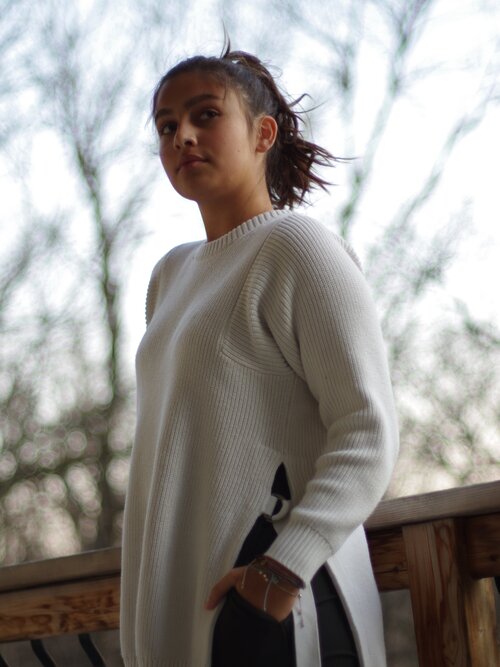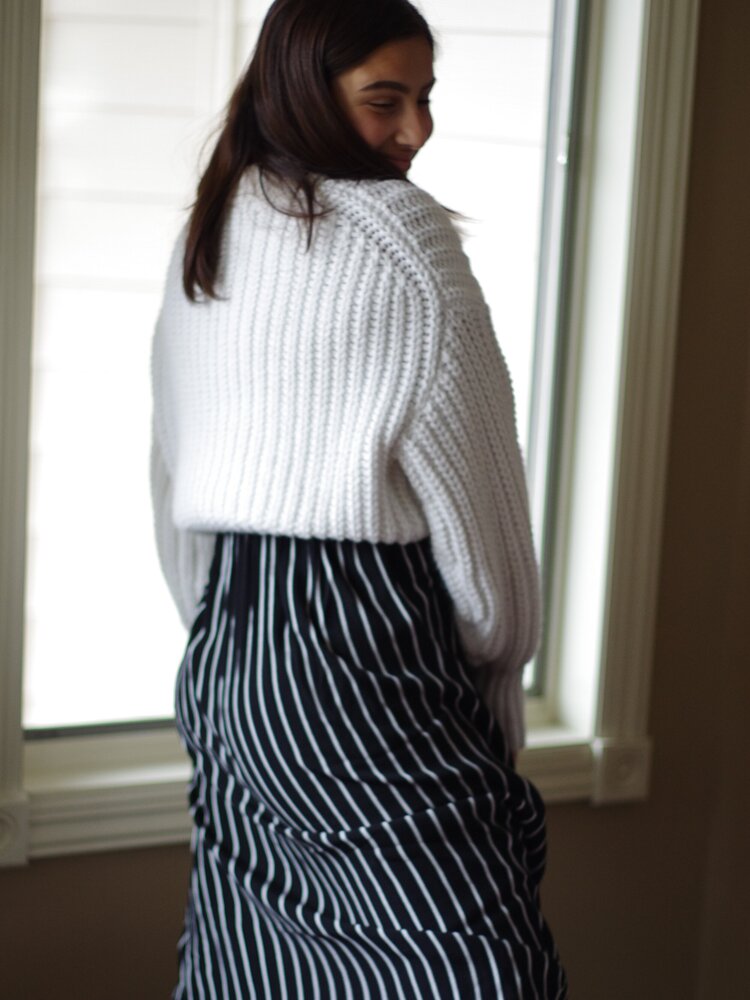Writing
The Avenue Magazine
Suits: The Timeless Piece
No matter the era, the suit has remained ever-present as a staple clothing ensemble, adapting to the culture and needs of society at the time. The suit has never left; it has just changed.
Read more – Page 52
Waking Up Like This
Fashion occupies space in so many environments. It’s at parties and on the streets, on the big screen and in personal closets, from one corner of the world to another. Fashion is everywhere, so it feels natural to share personal style when interacting with the world, especially when it’s such a clear way to express creativity and personality. Even when that social interaction changes significantly (read: there’s a pandemic, and going out has been replaced by endless time at home), fashion still weaves its way into our lives, whether by new modes of expression like social media, or in new trends like loungewear. But what about those times when there’s nobody else around to see what we’re wearing? When the looks we create are truly for our eyes only?
What about when we sleep?
Reclaiming the Nude
Human sexuality has been explored artistically for as long as we’ve existed. From paintings to sculptures and poetry to prose, artists have tried to capture the beauty of sexuality in their works– and the complication, freedom, and uniqueness that comes with it. These works of art have been respected, and even revered, throughout time, between nudity in Renaissance paintings and sculptures to the increasingly popular boudoir style in modern photography. So why is it that, when we try to embrace it on a personal level, it can become controversial?
Paris Blog
If a woman in Paris or London were to tell me she just “happens to look like that”, I would have to believe she’s lying. Because getting the perfect half-french-tuck, the perfect distressed-artsy jeans, the perfect subtle satin, the perfect accidental pop of color… it doesn’t just happen naturally! It can’t, can it?
If there’s anything I’ve learned from streetwear in these two fashion capitals, it’s that women’s style is rooted in the idea of intentionally creating a look so perfectly casual that an outsider could not tell the amount of effort that actually went into it. To say the least, I’m jealous. But my goal in writing this is not to lament the ease with which others create the style I wish I had. Maybe understanding how, or even why, women between these two cities do what they do will shed some light on how I (or we, if you’re reading this with the same dream, too) can pick up on the art of “waking up like this”.
I started my search in London, a city known for its appreciation for edgier style. But I wasn’t looking for the next Vivienne Westwood; this is about everyday women’s fashion, the looks that are just attainable enough to be replicated but just cool enough to be their own. Along a stroll from Kensington through Chelsea, two women stood out to me.
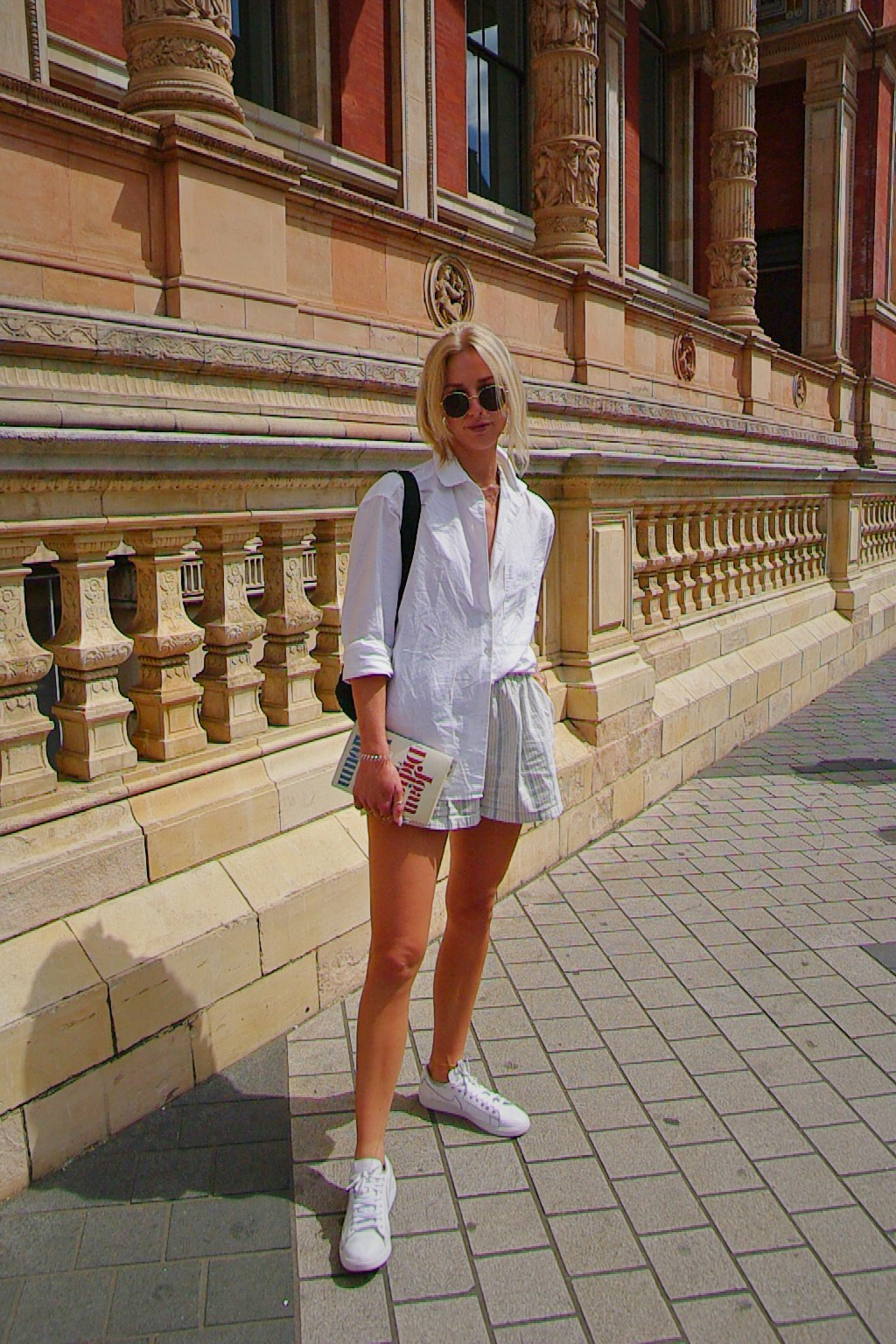
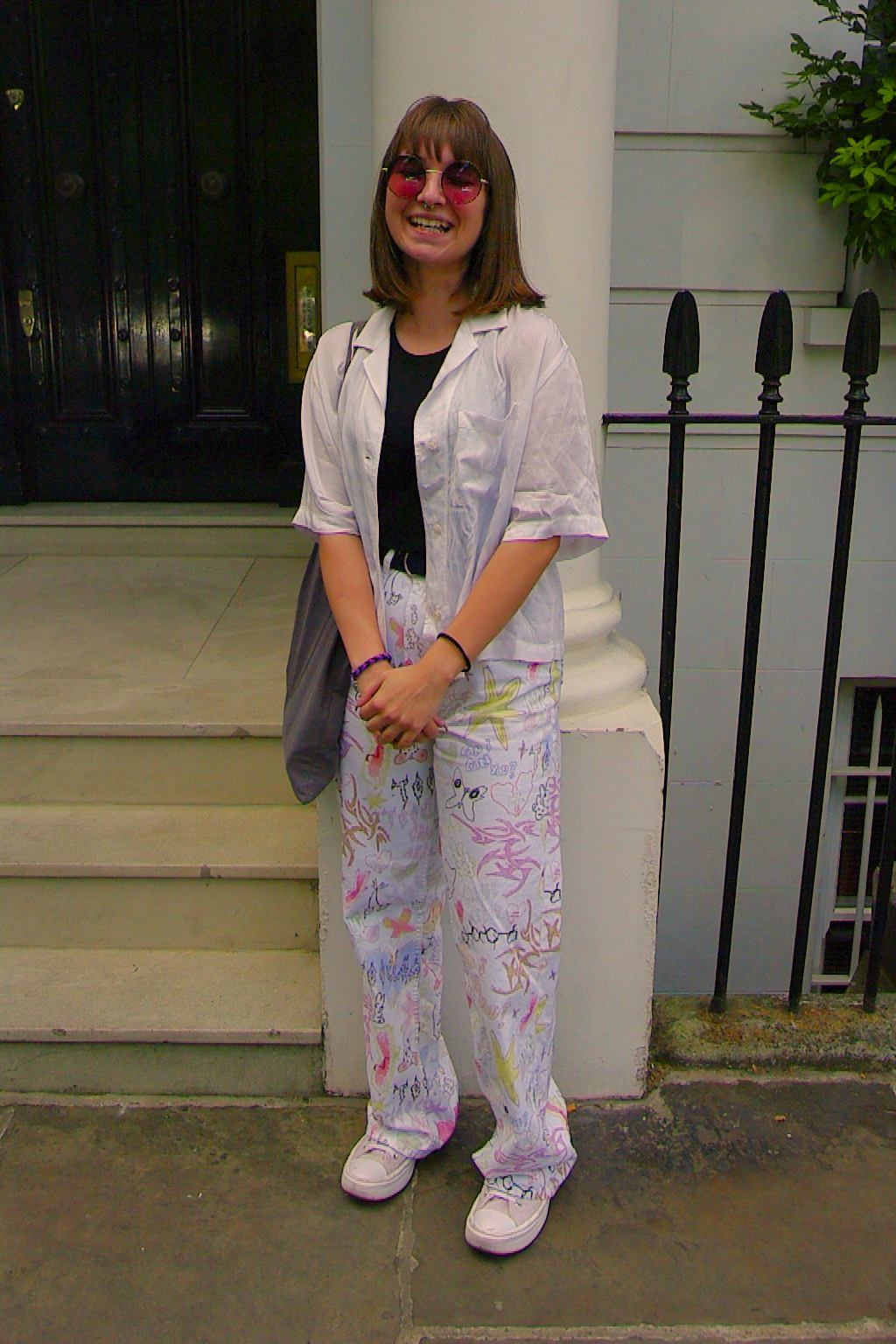
These two outfits capture a bit of artful indifference in their own ways. The woman on the left dressed down a classic white button-up with a pair of boxer-like casual shorts and a messy ponytail, creating something of a morning-after look. However, her intentional use of a classy tote bag, a book as an accessory, and pieces that are in pristine condition cheekily remind us that she isn’t really coming from a wild night; she’s just cool enough to pull off the look. But then the morning-after look isn’t the only one that looks casually cool – another girl caught my attention later that same day. This girl, a bit younger, showed off a pair of custom pants by pairing them with two basics: a button down and black tee. Upon closer look, the pants show off all kinds of personality; however, her understated color palette shows us that she doesn’t need piles of accessories or statement pieces to show who she is. Though these two women have two entirely different personalities, their plays on masculine fashion, neutral color palettes (mostly with a white button-down – who knew they could do so much?), and relaxed silhouettes successfully create a “classics dressed down” style that I’m inspired to emulate.
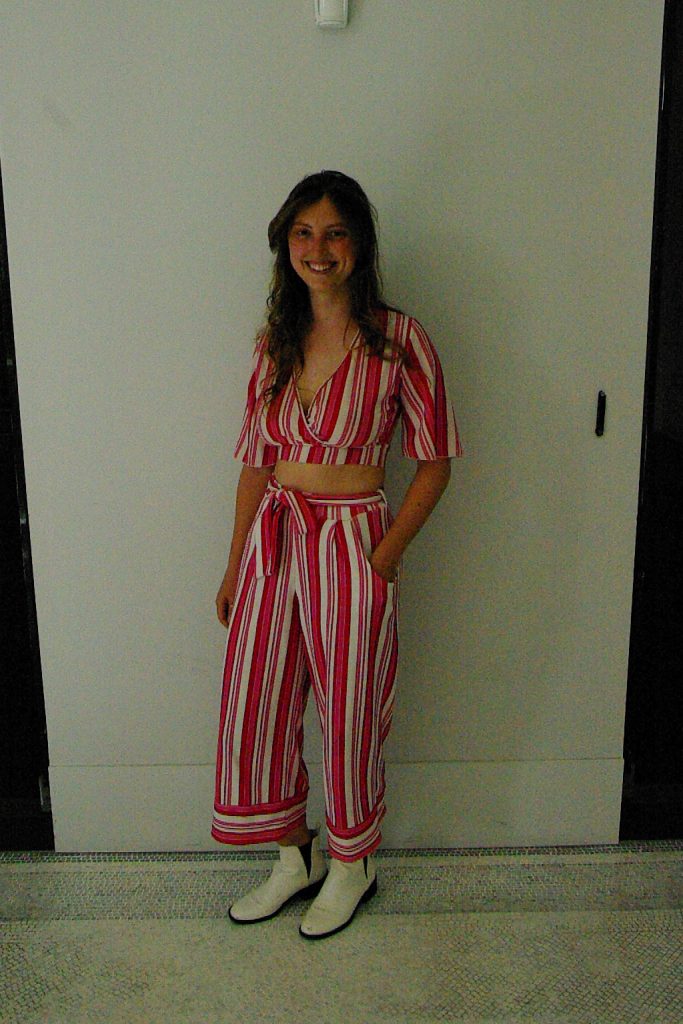
Even on a micro-trend level, Londoners have mastered the art of making it look easy. And maybe, in some cases, they’ve made it… actually easy? One of my favorite trends in London could be found on every type of person: man, woman, athletic, preppy, local, tourist, everyone. And that trend was the printed matching set. When I saw this girl’s outfit, pictured above, I simply had to capture it. This co-ord set shows just how easy it could be to throw an outfit together, look put-together, but still not be too overdone.
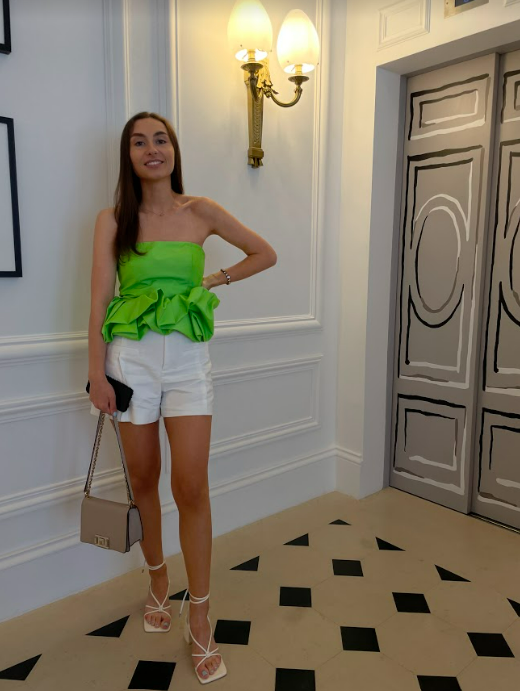
Parisians have come up with some pretty innovative ways to elevate style with less effort, too. One of my favorite microtrends I’ve seen in Paris (and, to be fair, in London as well) was the pop of color. Right now, these pops of color aren’t in the forms of just a red lip or a subtle shade. Pops of color this summer are unashamedly bright and inspiringly effective. I met the woman shown above above in the Galerie Dior, where her luxurious yet minimalistic look caught my eye. Her neutral color palette was a simple canvas for her nearly-neon statement piece. Taking the neutral palettes from London and adding a pop of color like this one adds a whole new layer to daywear, and it makes for another method for achieving the effortlessly cool look.
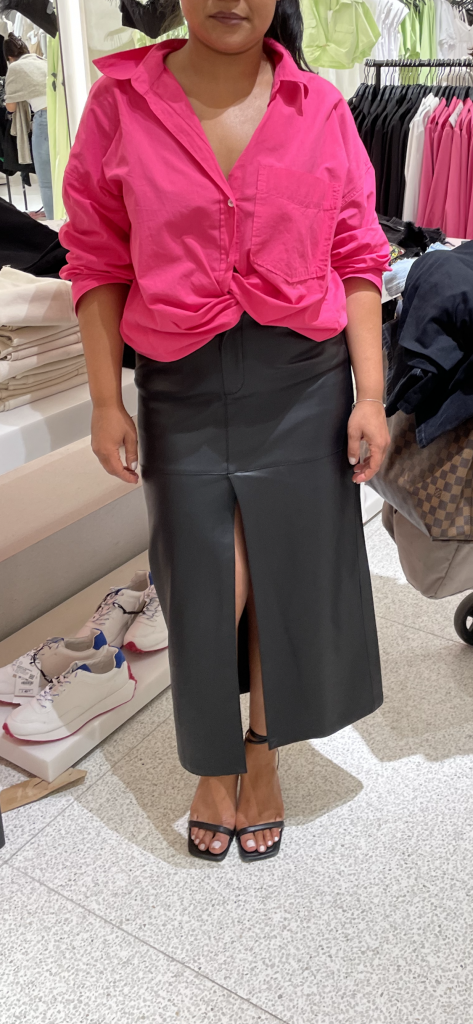
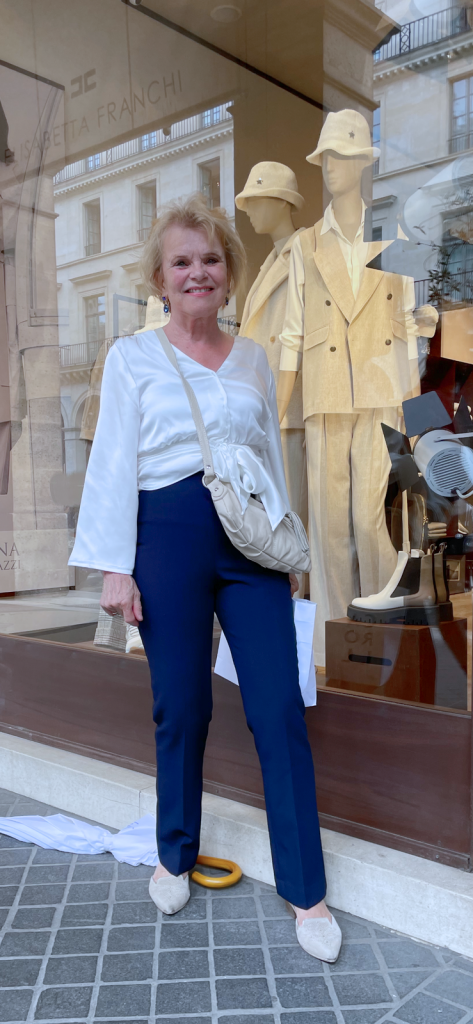
Before I make any final conclusions about the true method for just “happening to look like that”, I have yet to share my findings from the universally acclaimed fashion capital of the world: Paris. This one’s just a little harder to pin down than London. The women on the left and right are perfect examples, however. The lady on the right, spotted in the Place Vendôme, made an outfit that sounds simple on paper (just trousers and a blouse, right?) look as classy as one could dream of for a simple day to day outfit. This nonchalant elegance comes from a combination of small details: the sheen of her silk blouse, the way her luxurious sapphire earrings become a subtle accent by matching to her trousers, and her use of an elevated neutral color palette. The woman pictured left (face cropped out by request due to privacy), discovered in a Zara, similarly elevated the classic pencil skirt and button down by adding leather for texture and a pop of hot pink (hello, microtrend!) for color. In comparison to one another, these women are so different. Their ages, races, and shopping styles alone differentiate the taste they might lean toward. However, together, an essential style emerges: elevated classic. These two women have taken classic pieces like the button-down and the white blouse and elevated them to a new level of sophistication that is artful, but also appears effortless.
And then we have to look at the bigger picture: how are these two cities so alike yet so different? How do women in both London and Paris appear so effortlessly cool, yet do it in such different ways?
Between Paris and London, it’s so interesting to see how women use their talents for throwing together an outfit toward contrasting ends. In London, effortlessness is aimed toward dressing down for a casual look. In Paris, that same effortlessness is used to make an outfit luxurious without crossing any lines. This minor difference highlights London’s edgier, more non-traditional coolness in contrast to Paris’s love for luxe and glamor, yet also reminds us that there’s not quite so much difference between the two. I mean, everyone wants to look fashionable without trying, right?
And thankfully, there is actually a common theme here, regardless of a person’s idea of how “effortless” should look. The name of the game is classics. Whether dressed up or down, worn as the statement piece or as a neutral backdrop, styled traditionally or innovatively, wearing the styles we’ve always known and loved is a must when achieving the “I woke up like this” look. Whether you’re a London fashionista who strives to master artful casualness or a Parisian femme de la mode who desires more nonchalant luxuriousness, classics are essentials of any outfit and simply cannot be overlooked.
So as you rethink your personal brand of “I woke up like this”, I invite you to explore some of the other fun street styles I came across in these two vibrant cities and maybe even find some further inspiration. Who knows, maybe we’ll be the next ones on the back end of a, “Hi, I love your outfit – I’m writing a fashion blog, can I take a photo of you for it please?”
And then we’ll all be a little nonchalantly perfect, won’t we?
pick-me-girl. n. (slang)
a girl who is “not like other girls”.
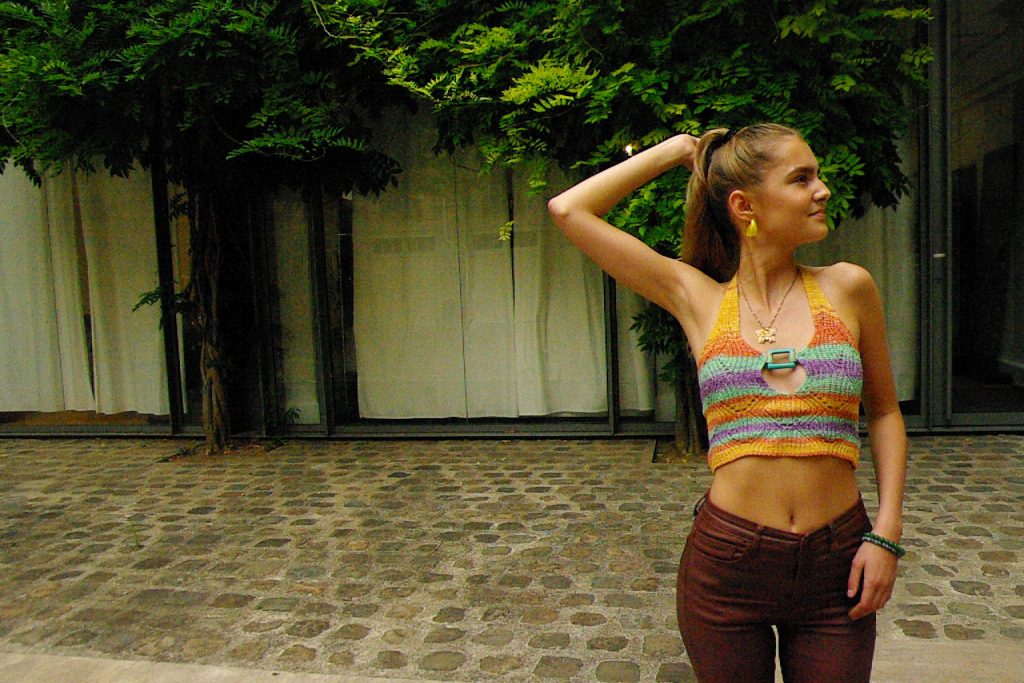
“Wait, I totally sound like a pick-me girl right now,” She says to me, seeming like she almost regrets what she’s told me about her personal style. It’s surprising and silly – of course she’s not a pick-me girl. But something about the statement makes me think. Why does talking about her sense of style make her feel like a pick-me girl?
I’m sitting in a courtyard with Corinne, a 19-year-old student with a love for fashion and exploring her personal style. She’s natural, confident, and bubbly. Up until this point, Corinne has told me about her love for unique or statement pieces, often with bright colors. “I like bright colors simply because it makes me happy,” she had remarked. “It uplifts my mood knowing that it catches people’s eye.” The vibrancy of these bright colors she is so drawn to matches her joy toward them; her love for color suggests a similarly vibrant and bright personality. Alongside colorful clothes, she likes to find pieces that are one of a kind, or at the very least outside of everyday basics – the classics don’t seem to do it all for her. She enjoys finding ways to show off her individualism in her fashion. She says, “I spend my time and money on items that I can know are unique to me… ”
“Wait, I totally sound like a pick-me girl right now,” She says, pausing her excitement, suddenly reevaluating her feelings about originality. I’m surprised – sure, originality and forced originality are two different things. But she’s sporting vintage yellow earrings, a retro-inspired crochet crop top, and a fun pair of flare pants, which altogether create an outfit with individualistic flair – in other words, there’s nothing fake about her originality. So where does that thought come from? Why a pick-me girl? I ask her.
“I used to always be called weird and annoying growing up. I think I have learned to be less annoying, but I can’t change the part of me that likes to be loud or stand out.” So maybe, despite her seemingly upbeat personality, there’s still a hesitancy around embracing some of the bolder parts of her personality. “I think, because I have a strong personality, it’s easily reflected in my style by the vibrant colors and unique pieces I put together.” So here, in her style, she leans into her uniqueness. She’s not afraid of being who she is through her clothing choices. Fashion is a comfortable mode of expressing herself.
I take a moment to reflect. Fashion is such a visible way of self-expression, especially in the face of hesitations around any aspect of the self. Regardless, the version of herself that Corinne shows to the world through her clothes is colorful, uplifting, and one-of-a-kind. If being all of these things makes a person a “pick-me girl”, there’s a lot to be rethought about individuality. And you know what? I guess I’d want to be a “pick-me girl”, too.
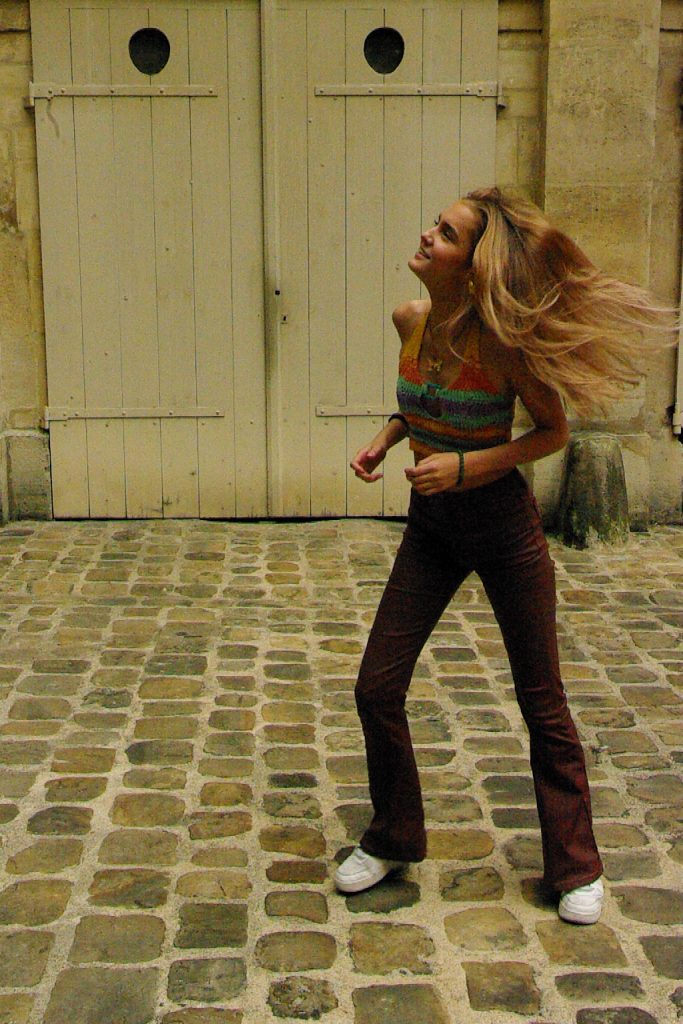
Set underground in the Victoria & Albert Museum, Fashioning Masculinities explores and redefines masculinity. The exhibit has three stages: “Undressed” reveals differences in men’s undergarments across cultures; “Overdressed” draws similarities between adornment styles over time; “Redressed” introduces recent innovations around the concept of masculinity. Throughout the exhibition, visitors learn to redefine masculinity as they explore it through fashion.
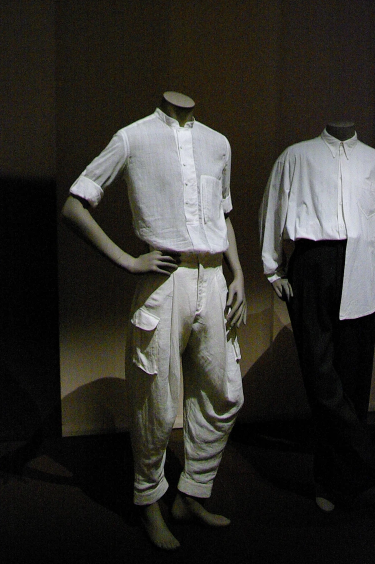
The ensemble above, a modern adaptation of historical men’s undergarments, represents “Undressed” perfectly. In the exhibit, it stands among historic undergarment styles and their modern reimaginations, showing men’s clothing in its most basic form and how these styles are recreated today. Worn so closely to the body, undergarments can reveal so much about a person, and this is exemplified through the ensemble pictured here.
This all-cotton outfit was designed by Rajesh Pratap Singh in 2009 in Delhi, India, combining Indian designs from his own culture with European-inspired details. Singh’s combination of cultures is particularly interesting to set the scene in “Undressed”. Indian fashion explores masculinity very differently compared to Western fashion, with its genderless use of bright colors and popularity of the Kurta (a men’s suit consisting of a long tunic which Western societies would compare to a dress). Though Singh’s outfit doesn’t incorporate these specific aspects, its nod toward Indian fashion is a reminder of cultural differences in masculinity. Singh embraces these cultures in his design, showcasing his take on masculine fashion.
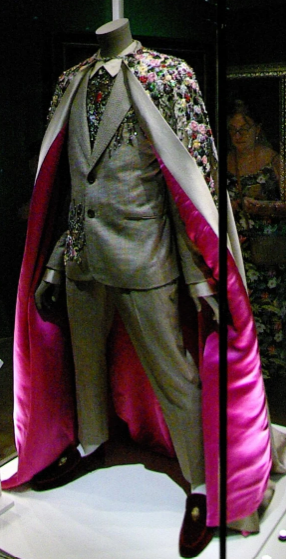
Unlike the simplicity of the ensemble above, the styles in the “Overdressed” exhibit are quite bold. “Undressed” outlines simple silhouettes, focuses closer to the masculine body and self, and prioritizes comfort over adornment; the “Overdressed” looks are designed to stand out and show off. The suit and cloak above, for example, are so embellished that the observer hardly notices the base suit; instead, they notice the beaded embroidery and lush pink lining. But despite these differences, both styles invite the viewer to critically explore masculinity. Let’s examine how.
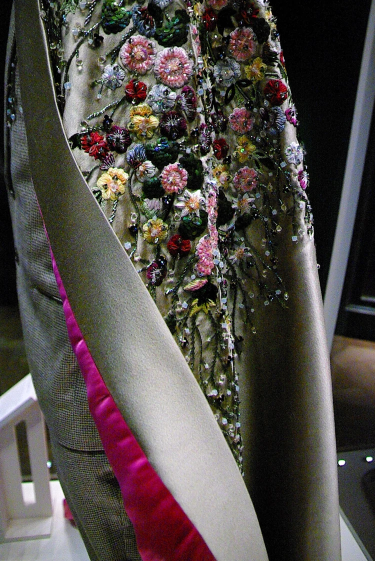
This is a design by Randi Rahm from 2018, created in New York with wool, silk, glass, metal, sequins, and synthetics. It was worn by Billy Porter (an actor in boundary-breaking TV shows and activist for Black and LGBT+ communities) for the 2019 Golden Globes with the intent of encouraging viewers to rethink men’s fashion. Despite Porter’s innovative edge, the design itself is actually inspired by 18th-century style, when menswear was decorated ornately to represent class and power instead of femininity or showiness. This ensemble embodies “Overdressed”; its adornment pushes the limits of current perceptions of masculinity, but its inspiration comes from historic men’s clothing. Other outfits in this section similarly reawaken historically masculine details, like flashy fabrics and pink patterns. This educates visitors that what we ‘invent’ now isn’t always new; what is masculine changes over time, and everything comes back into fashion.
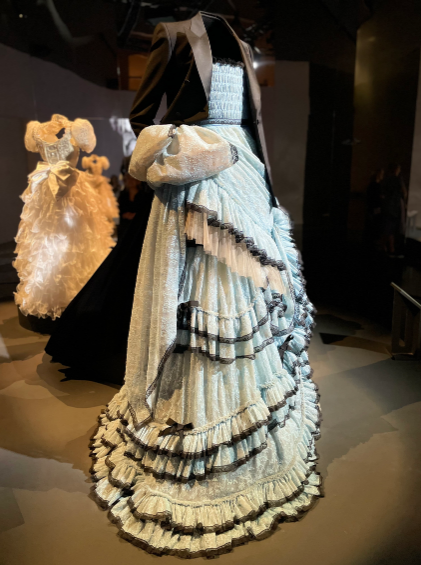
But some fashion statements are brand new. “Redressed” explores some of these cutting-edge ideas, such as the men’s gown. For this area of Fashioning Masculinities, the Gucci gown by Alessandro Michele is a great example of what revolutionizing masculine fashion can look like. This gown, part of Gucci’s 2020 Autumn/Winter collection, was created in Italy using tulle and lace, then styled by Camilla Nickerson and Anna Wintour for Harry Styles to wear on the cover of Vogue magazine. But how can gowns redefine masculinity? For much of Western history, gowns symbolized femininity. How could gowns even be masculine? “Redressed” reminds us that masculinity isn’t the absence of femininity. If anything, the confidence in embracing such a contrast embodies the essence of masculinity.
Throughout Fashioning Masculinities, masculinity is defined differently by every designer, wearer, and audience. Designers draw on their cultural and personal perceptions to create masculinity, like Singh’s design in “Undressed”. Societies display masculine qualities of strength and power differently over time, like those that inspired Rahm’s suit-cape ensemble in “Overdressed”. Fashion’s thought leaders continue reinventing masculinity through their own inspirations and desires to empower people to embrace masculinity in their own ways. Overall, one theme emerges. Masculinity is in the eye of the beholder; it cannot be constrained to one definition.
